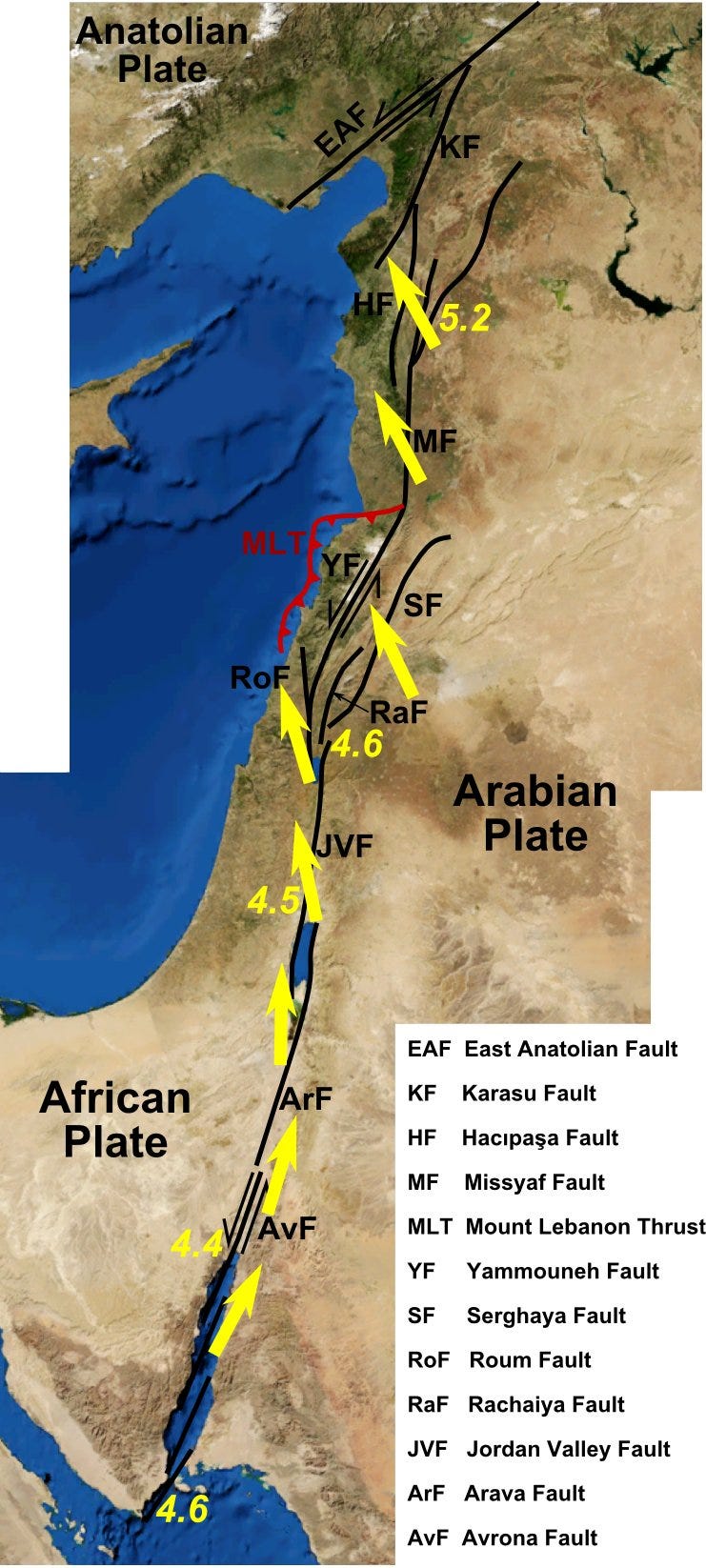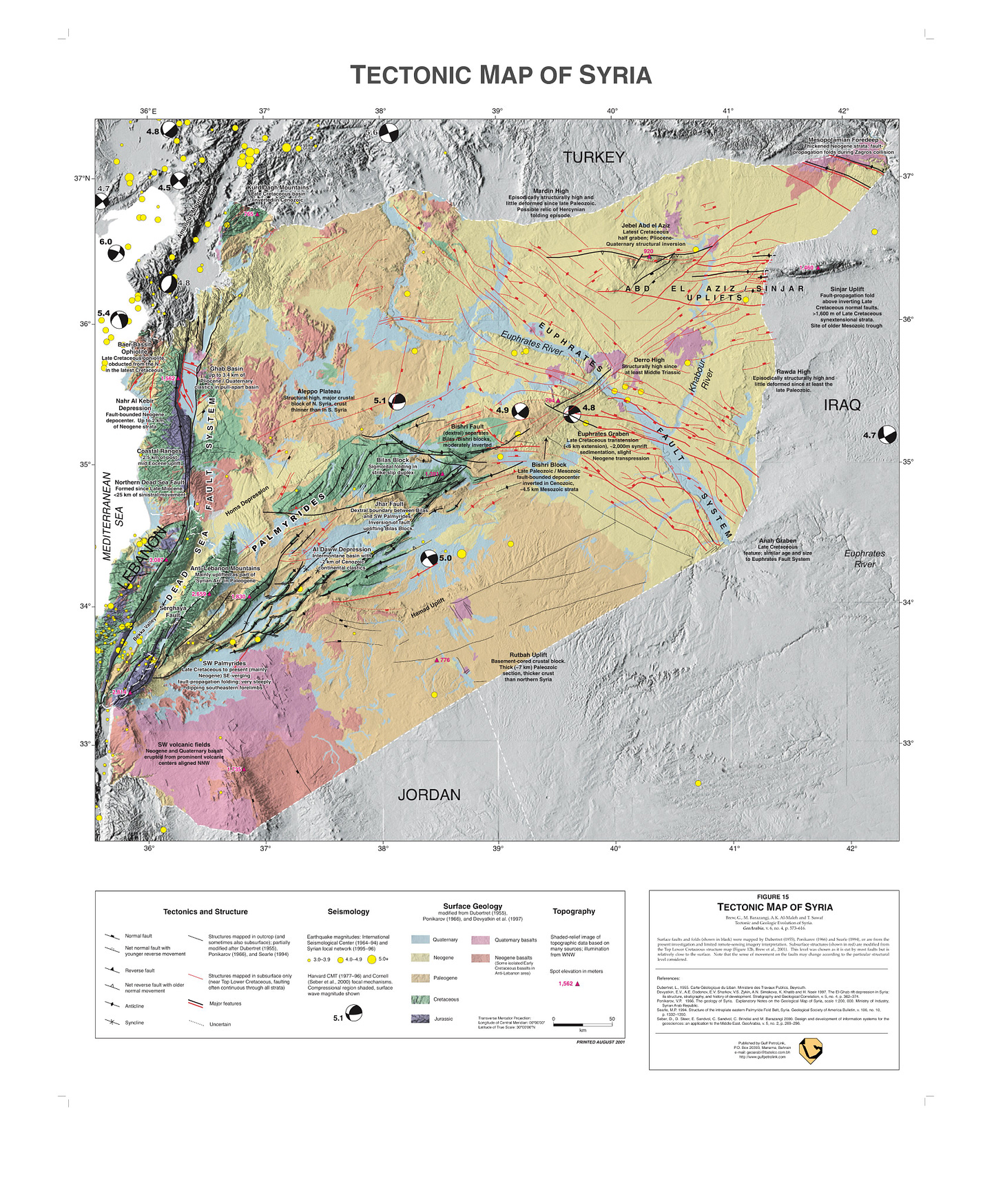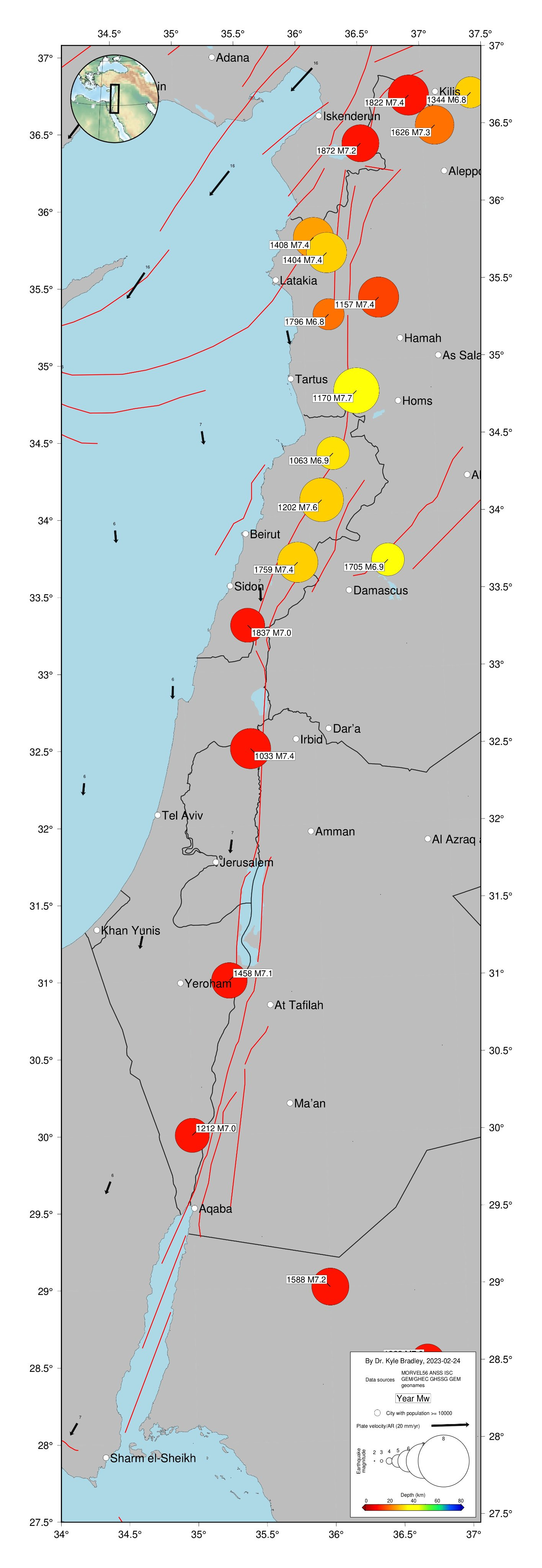M4.2 earthquake in Syria widely felt in Beirut, Damascus
This earthquake was either on the Dead Sea Fault, or in the Palmyrides to the east.
UPDATE: an hour after the event, EMSC updated the location and magnitude of this event to M3.6, further west (possibly on the Dead Sea Fault). Check their website for the latest info. Background information for the region is still accurate, but the details of the earthquake may be different. Updates like this can happen for earthquakes; they may be more likely here due to the sparsity of seismometers.
A M4.2 earthquake occurred below the Palmyride mountains in Syria at 14:25 local time on March 15 2023. The earthquake was felt in Syria, Lebanon, Israel, Turkey, and Jordan.

The Dead Sea Fault is a plate-boundary fault system that accommodated the northward movement of the Arabian plate (right) compared to the African plate (left) at about 5 mm/yr.

The Dead Sea Fault is certainly active, with both low-level modern seismicity and larger, but infrequent, historical events.

Today’s earthquake occurred not on the Dead Sea Fault but in the Palmyrides to the east. Today’s earthquake occurred near a historical M6.9 earthquake in 1705, which caused damage in Damascus.
The Palmyrides are a mountain range that has risen east of Beirut because the Dead Sea Fault is bent. As the two plates try to move past each other, that bend acts as a barrier - it is compressional. Thrust faults and associated mountains have risen, extending for several hundred kilometers to the northeast into Syria. These mountains typically host M4-5 earthquakes, both strike-slip and thrust.

Mapping earthquakes in this region is tricky for two reasons. First, global catalogs do not have dense seismic sensors in this region and often miss earthquakes <M4. Local networks are hard to access. Previously, I used the Israeli catalog to determine that the Feb. 6 earthquakes in Turkey triggered an increase in seismicity on the Dead Sea Fault. However, I am having difficulty downloading new data from them now.
Second, the catalog is contaminated with seismic signals from quarries and mining, so many of the small “earthquakes” in the catalog are actually anthropogenic blasting.
Today’s earthquake was not large; events like this are fairly common. More than 20,000 earthquake above M4 occur every year globally. Along this section of the Dead Sea Fault and the Palmyrides, there are typically 0-4 M4+ events per year, with a slightly increase in 2023 possibly due to the Feb. 6 Turkey-Syria earthquakes to the north.





